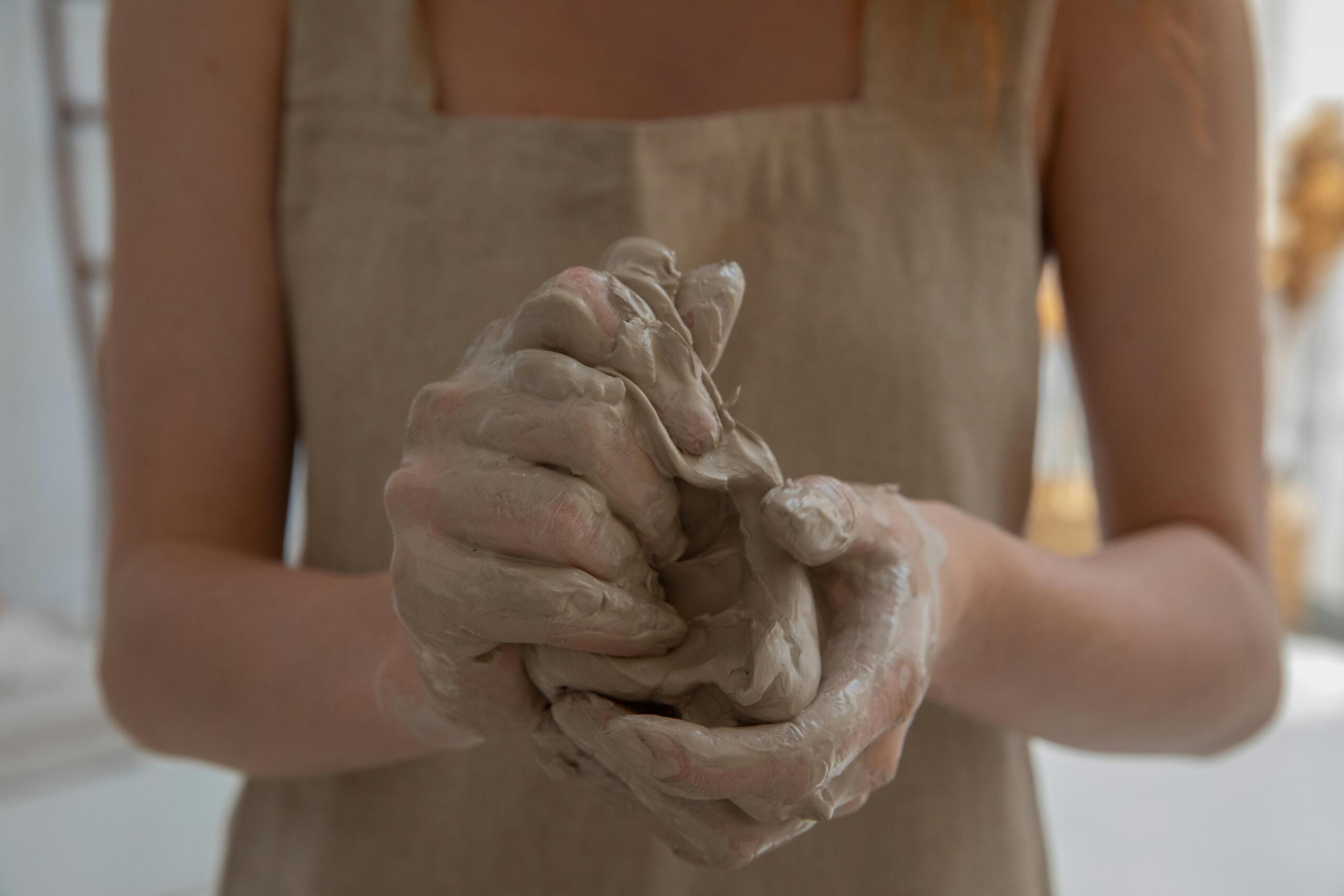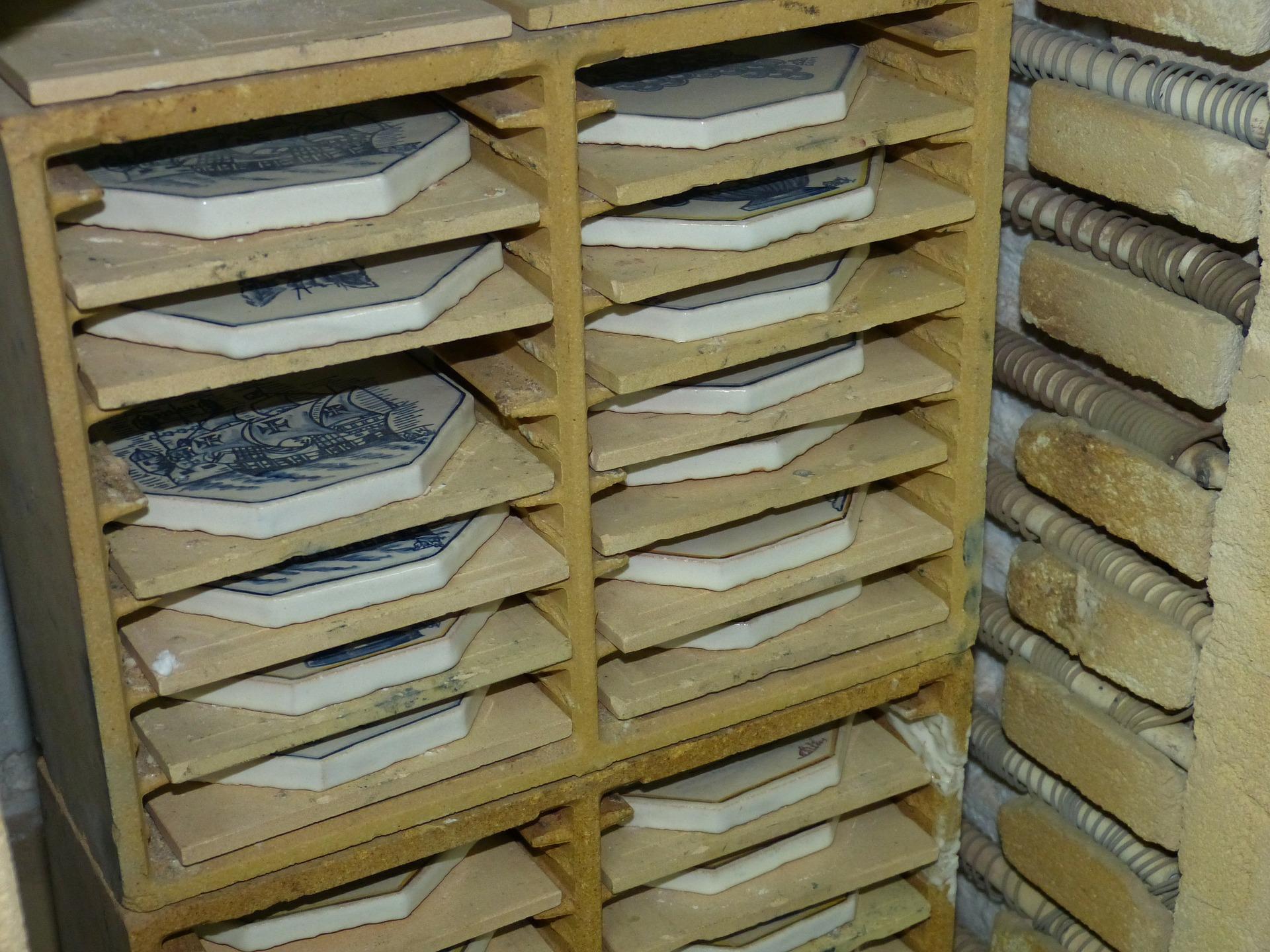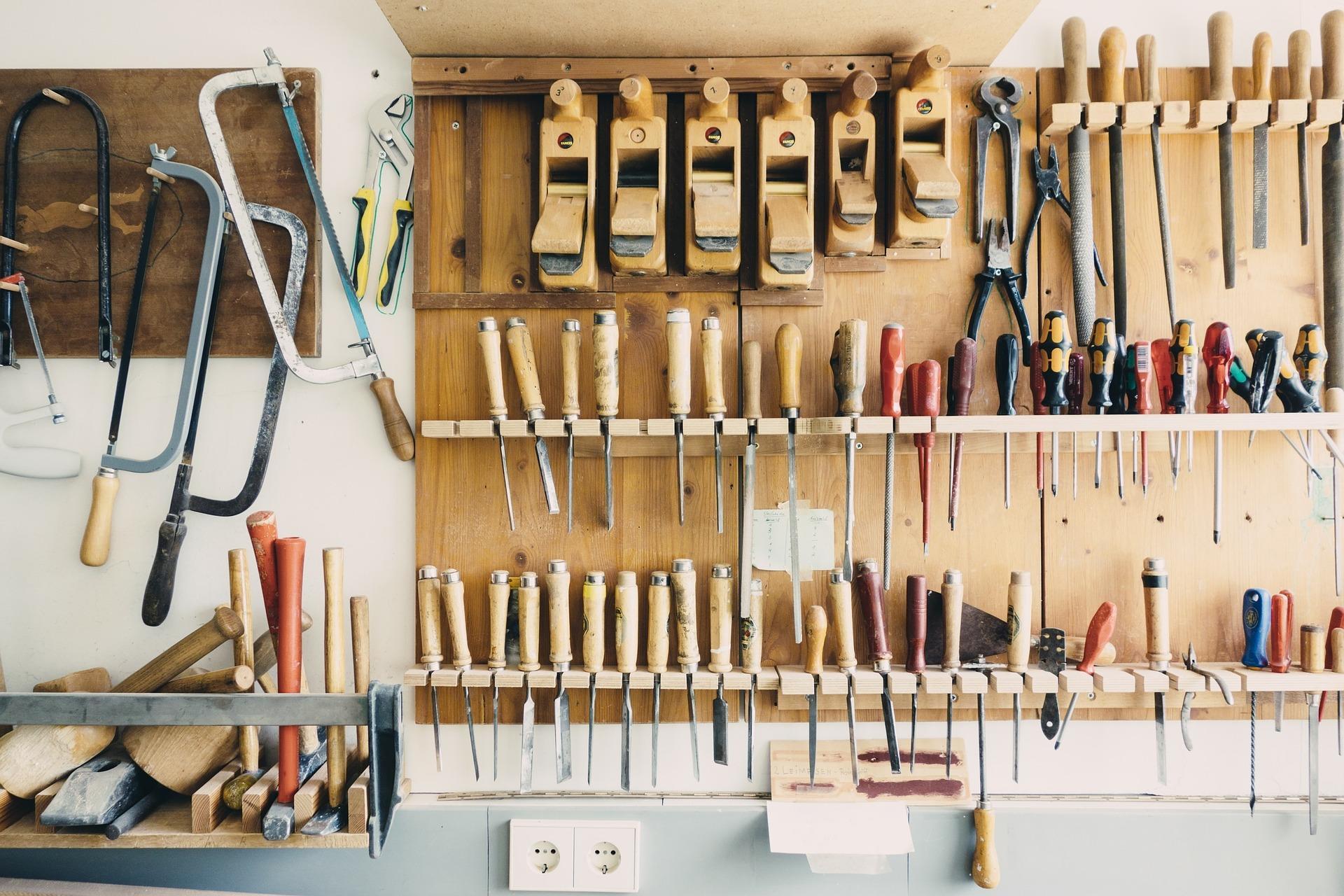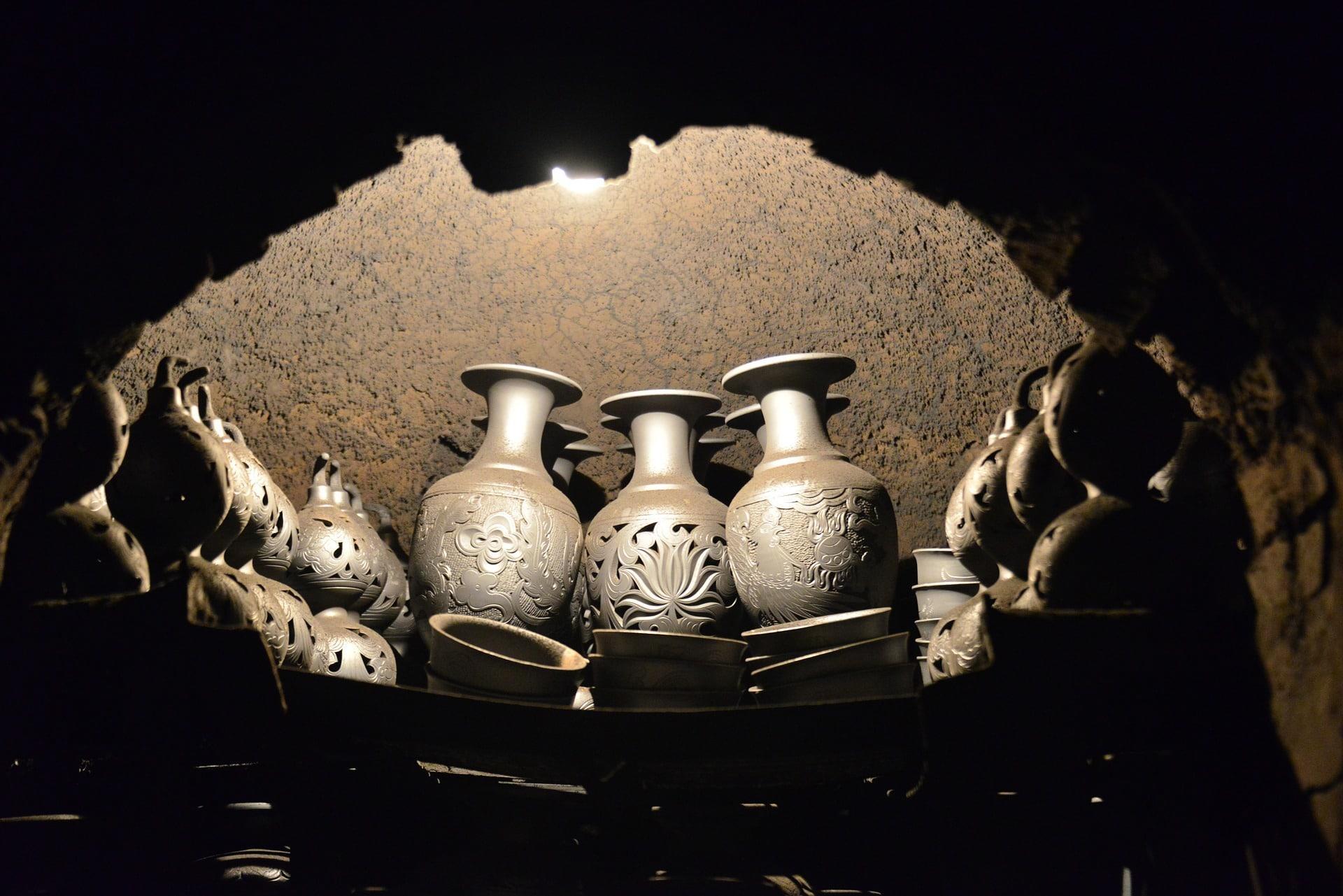You might remember this line from any job interviews you participated in: what do you bring to the table?
Come to think of it, you might have heard it even if you’ve never been on a job interview; it is a fairly common phrase that implies you must provide a measure of something to receive something in return.
It’s also, if you think about it, a little bit demeaning, as though your obvious qualities would not be sufficient to close the deal – whatever the deal may be.
The good news is, when it comes to pottery for beginners, you don’t (necessarily) have to bring anything to the table, at least as far as equipment goes.
Ceramic arts are engaging and challenging. Pottery lessons Toronto require fortitude, a bit of physical strength and endurance, and more than a bit of knowledge about the creative process involved.
How does one go from concept to actual, tangible earthenware that you can seal with a ceramic glaze and then safely serve food out of?
To be sure, there is equipment involved in ceramic art; the art center or ceramic studio where you’ll take your classes is no doubt full of tools and equipment for the burgeoning ceramic artist.
No doubt that you will find everything from ceramic materials to pottery wheels, extruders, slab rollers and more. Let’s not forget the most important piece of equipment: a kiln... or several, depending on how big the space is and the type of ceramic products they produce.
For instance, raku pottery is fired at a much lower temperature than studio pottery or art ceramics; if this is the type of pottery you want to specialise in, you would need a raku kiln.
It’s a good thing that ceramics studios have different types of kilns already installed. Can you imagine yourself lugging your gas kiln or electric kiln to every single class you attend?
The fact is, although you may be asked to pay for the clay and other materials you use in class, the studio where you take lessons will most likely have all of the equipment you need.
They will also recommend that, if you’re serious about pottery-making, you should work at home at least as much as you work in class.
So, let’s say you are on your way to a Bachelor of Fine Arts, taking an extracurricular class at a ceramics studio in town. You will still have to do a bit of work at home, even if it is only mold making so that you can make a whole set of tableware with the same pattern.
You can make your plaster moulds at home if you have the right materials and equipment.
Likewise, if you’re taking adult classes, working with ceramics for the first time, you might make clay figurines at home that you could then fire in your next class.
So, when it comes to equipment you might need for your classes, the answer there is: depending on how far along you are in your studies (you’re going for your Master of Fine Arts?) the more tools and equipment you’re going to need.
Superprof now takes a look at the list of utensils and implements you need to become the artist in residence.
Find various art classes for kids here on Superprof.

Kilns: the Essential Ceramics Equipment

It goes without saying that you would have a difficult time declaring yourself a maker of ceramic sculpture if you did not have the most crucial piece of equipment: a kiln.
Besides deciding whether your kiln will be powered by gas or electric (or wood, if you build one yourself), you have to decide what size kiln you will need – now and in five years.
If your goal is to make small ceramic medallions for painting and drawing, you may choose from among the smaller models available but if the thought of vases fills your mind day and night, you will certainly have to choose a kiln with a larger interior space.
And then, materials matter. The above-mentioned raku kiln, for instance, would be a low-temperature model. It would be suitable for terracotta and low-fire glazes. On the other end of the spectrum, if you aim to create durable stoneware, for example, you would need a high-temperature kiln.
Unfortunately for your budget, you cannot simply buy the hottest kiln and turn the temperature down as needed. The thermostats are set for specific temperature ranges so selecting a kiln based on the type of pottery you plan to make would be your best bet.
Pottery for Beginners - Why You Should Get Your Own Kiln
The first thing to know about a kiln is that it's an insulated enclosure in which people fire clay items such as pots or tiles. It comprises enclosing brick or masonry construction with openings for charging and removing work pieces, and provision of heat from an external source.
With a kiln, you will be able to fire anything from under-glazes to high salt gloss glazes. It's not just for ceramics, but any type of creative arts. It uses heat generated by burning materials inside the kiln. The best part of using it is the ability to reach the temperatures required to fire certain types of materials without having to adapt its design or structure.
What kind of kiln is best for you
There are mainly three types of kiln; ceramics kiln, glass kiln, metal clay kiln. Depending on what you want to make, you can get stuck deciding which type of kiln to start with. When you visit a ceramics supply store and ask the staff members for advice about purchasing a kiln, they will usually ask you to tell them your budget and what kind of pottery you want to make.
The cheaper ones generally cost less than $100 and can be used for firing porcelain and Raku firing, but for more advanced work such as firing stoneware or high-fire ceramic ware, costs will be higher, between $500-$2000.
You may also hear the terms gas firing kiln or electric firing kiln, which are nothing but two types of machines that produce heat in different ways. The term "electric firing" is used in the original English language when people refer to electric kilns.
Electric firing is popular because they are easy to use, portable and they usually run on standard electrical voltage (110V). Therefore, you don't need an electrician or even an electrical circuit breaker in your home for them to work.
Always go with the brand that has the best reputation, especially if this is your first firing kiln. The most expensive isn't always the best, so take some time out to research before you purchase one. If you can rent one too, it will be much more cost-effective in the long run.
With pottery lessons Vancouver, you can learn more about this amazing pottery equipment.
Discover more properties of ceramics...
Pottery Ideas for Beginners - Potter’s Wheel
Art history teaches us that our ancestors made pottery long before the invention of the wheel.
If you wanted to be an absolute purist, your signature style might involve making pottery as it was done long ago: by placing the piece on a grass mat, turning the mat as needed to work on all sides of the vessel.
Learn more about the history of ceramics...
On the other hand, why reinvent the wheel? A pottery wheel will make your work faster, easier and with less chance for error... after you get good at working clay, that is.

Clay artists suggest beginners take a wheel throwing class.
It takes a certain amount of skill to know exactly how fast to permit the wheel to spin, how much pressure to put on the clay and how much water to use. It is also a good idea to get into good pottery-making habits from the start: good posture, good pressure and a good skills set.
Naturally, if you take a wheel throwing class, you will surely want to follow up at home, on your own wheel.
Here again, you have a wide selection to choose from – different sizes and different heights. The speed is controlled by a treadle, much like a sewing machine, making it variable so that is one factor you don’t necessarily have to worry about.
Wheels are not cheap so consider carefully. Your selection should be based on the pieces you intend to create and the ceramic material you intend to work with.
Don’t waste your money on a lightweight tabletop model if, eventually, you intend to work heavy pieces!
A wheel, a kiln and a variety of clays are enough to get you started in the visual arts. Everything else on this list is optional, even the hand tools!
Find various art classes Calgary here on Superprof.

How to Use a Potter’s Wheel
A potter's wheel is the tool used to create pottery, typically with hand-turned wood paddles on the inside. Other more complex types of wheels are sometimes called mills. It is used by turning the handles of the wheel so that clay, which has been pushed inside of a long cylindrical container called a pot, can be formed into shapes by moving across an inclined table called a molding surface.
Learn more uses of a potter's wheel with pottery lessons Ottawa.
To use a potter’s wheel, you will need to get a potter's wheel. There are many models out there; they vary in size, medium, and shape. You should choose one that will fit your work area and your budget. It should also be safe to use, not only for yourself but the people around you as well.There are different types of potter’s wheel, they are;
- Earthenware Pottery
- Stoneware Pottery
- Porcelain Pottery
Once you have decided on the type of potter's wheel you want to purchase, it will be necessary to purchase additional supplies in order to get started. Those who are beginning to use a potter's wheel need several things in order to begin making pots.
Find art classes Vancouver here on Superprof.

The first are the pots themselves. These are made in a special mold that is usually called a wet clay mixer or mixer. The clay for this must be mixed together very well before it can be used as a good source of clay to form pots from. This can be done using a potter's paddle, which is usually available at the place where you purchased your potter's wheel or at any other home improvement store.
The Benefits of Mastering the Use of Potter’s Wheel
It has the power to produce an infinite number of forms and textures. Once you master this tool, it can be used for any type of clay or material, whether it be different shapes and materials or recycled pieces. Furthermore, the potter's wheel can produce true pieces due to its relative accuracy.
Pottery for Beginners - Learn Using Racks
Naturally, you can cool terra cotta pieces on any surface that can withstand the heat – remember, whatever comes out of the kiln is going to be very hot.
One particular sculptor we talked to raved about the functionality of milk crates. She had built an entire wall full of shelves with nothing but milk crates and boards.
The boards form the shelves while the crates work as storage space for anything from paints and glazes to hand tools.
If your studio space is limited, perhaps this could be an option for you, too. Do you know that pottery lessons could help you discover more uses of racks?

Pottery Ideas for Beginners - The Must Have Hand Tools
If you want to learn ceramics, the most important tools you will need are a bucket of clay, a board for working on, and lots of water. Beyond that there are lots of extra items that might come in handy depending on the type of work you want to do. You will also need an area where you can fire your pieces once they have been made, as well as a list of supplies for glazing your creations after firing.
Different types of tools are essentially needed for pottery lessons. These are;
- Smoothening tools
- Decorating tools
- Sculpting tools
- Wet and dry tools
- Finishing tools
The essential tools needed are:
- Rubber Gloves (to protect your hands).
- A Wooden Spatula (useful for mixing clay, shaping it and other tasks. The one shown in the picture is not the best kind to use; it is better you get a plastic or metal one because if you work with clay a lot, the wood will eventually rot).
- A Plastic Cupping tool (this could be made out of steel or plastic). Plastic ones are easier to clean and more resistant to wear and tear). It is used to shape the bottom of your pottery.
- Mudtool sponges (made from a firm plastic or from steel. These are used to help shape the clay).
- Paintbrushes (useful for applying glazes).
- A Plastic Mallet (it helps to work with hard clay).
- Small trowels (for decorating).
- Cotton Gloves (useful when you are working with glazes, some are toxic)
How to Choose the Right Slab Roller and Extruder
A good slab roller is one that does not slip on the surface even when sliding it back and forth, it has a wide base for stability, and a large head so it can provide a lot of pressure to the surface. A good extruder is one that can accommodate a variety of shapes without jamming or breaking down at high temperatures.
Basically, you need to ensure that the edges of the roller (or extruder) are smooth and flat. If they can't be made to be flat, it is difficult to make a good slab or extrusion. Also, if it is possible for the center of the roller to rotate while rotating in one direction, it means that the head of the roller is too small and will not be able to cut through hard materials well. You can see if the manufacturer has a reputation for providing good products, and if they have a large amount of feedback.
Find art classes here on Superprof.
How to use Hand Tools to Learn Ceramics
Naturally, your hands are the best tools for pottery. Besides them, you will need a few more implements:
- a wire clay cutter
- loop, wire and ribbon tools
- wooden modelling tools
- ribs and scrapers
- potter’s needles
- callipers
- brushes
- sponges
Naturally, there are plenty more clay tools – fettling knives and clay turning tools but the ones listed above should be enough to get you started.
Find various art classes Ottawa here on Superprof.

Two Extras
Once you have sunk deeply into the world of studio ceramics – in other words, you live, breathe, eat and sleep studio art, two pieces you will certainly add to your equipment inventory are a slab roller and an extruder.
Extruders are particularly handy if you intend to incorporate the same shape into all of your designs, say, a handle on a mug or a repeating pattern on a vase. It works a bit like a cake decoration set: a filled body with a variety of ‘tips’.
If you plan on working with very big pieces, having a slab roller would be quite helpful. Basically, it is a giant rolling pin; you set the slab’s desired thickness and the machine will roll it out for you.
If you wanted to roll out smaller pieces, you could, of course, use a kitchen rolling pin but you’re not guaranteed uniform thickness throughout.
Find out what you need to get started with pottery lessons...
Space, the Necessary Component
Space is neither a tool nor a piece of equipment but it is absolutely vital to becoming a resident artist.
You must have enough room for storage; it is not likely that you will buy your composite materials in retail shops – meaning a pound at a time. Rather, you would establish an account for bulk purchases of ceramic materials... and you will have to have a place to store them.
Besides the space needed to store your raw materials, you will need space for a cooling rack or three.
Your art studio should also have a water supply and a sink outfitted with a clay trap – you don’t want bits of clay clogging the sewer systems. You’ll also need sufficient lighting and a power source for your kiln, if electric kilns are what you have your eye on.
By contrast, if a wood kiln strikes you better, you will have to have room to store wood and make sure your space is well-ventilated – or have a space outside for your kiln.
Find art classes Toronto here on Superprof.
How to Get the Best from Your Ceramic Lessons
Ceramic is a material that can provide hours of fun, creativity and enjoyment. If you are thinking of taking up ceramics, then it is important to know what you need in order to get the best out of your lesson. It is important to know what you can benefit from your lessons before you begin. First, you will need to know how to work with clay.
Secondly, your ceramic lesson will require you some tools. You can either purchase ready-made tools, or create your own. There are various techniques you can use to make and sculpt your own tools and materials.
Finally, you have to have room to work in.
That may sound obvious but you’d be surprised at how many just-starting-out ceramic artists don’t leave themselves enough room to work or worse: choose to work in cramped, potentially dangerous conditions!
To get an idea of the space you would need, cast an eye around the studio you take classes in. Is it large? Well-lit? Does it have plenty of room?
That is what you need to aim for when setting up your studio, too.
Now discover where you can find the best ceramics classes and workshops...
















